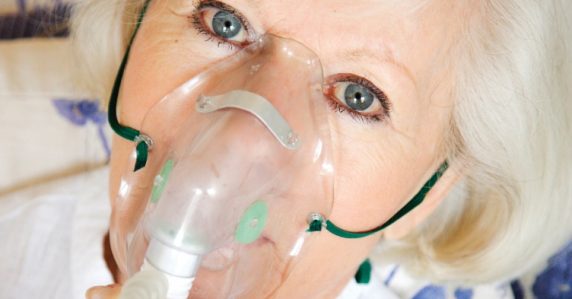CPD: Key Questions on domiciliary oxygen

Key learning points
- Domiciliary oxygen can be for both symptomatic and prognostic purposes – LTOT improves survival in patients with COPD
- Oxygen can be supplied by concentrator, gas or liquid cylinder, and delivered by mask or nasal cannula
- Oxygen is not indicated for patients with cardiopulmonary disease with dyspnoea who maintain saturations greater than 91%, or who will not comply with the prescribed number of hours per day
- Patients with respiratory problems planning to travel by air should receive in-flight oxygen if their resting saturations are less than 92%
Dr Roger Henderson is a GP and UK medical director for @LIVAHealthcare
Q. Which patients with COPD should we refer for consideration of domiciliary oxygen – and is the treatment for symptomatic or prognostic purposes?
Treatment can be for both symptomatic and prognostic reasons. The NICE clinical guideline for COPD1 recommends referring for long-term oxygen therapy (LTOT) assessment if the patient has an oxygen saturation of 92% or less breathing air. NICE also recommends LTOT if airflow obstruction is very severe (FEV1 less than 30% predicted) or severe (FEV1 30-49% predicted), or the patient has cyanosis, polycythaemia, peripheral oedema or raised jugular venous pressure. Long-term administration of oxygen (usually at least 15 hours daily) improves survival in patients with severe COPD.2
Click here to read the full article and download your certificate logging 1 CPD hour towards revalidation
Not a Pulse Learning member? Click here to join and gain access to over 400 CPD modules
Pulse July survey
Take our July 2025 survey to potentially win £1.000 worth of tokens

Visit Pulse Reference for details on 140 symptoms, including easily searchable symptoms and categories, offering you a free platform to check symptoms and receive potential diagnoses during consultations.










